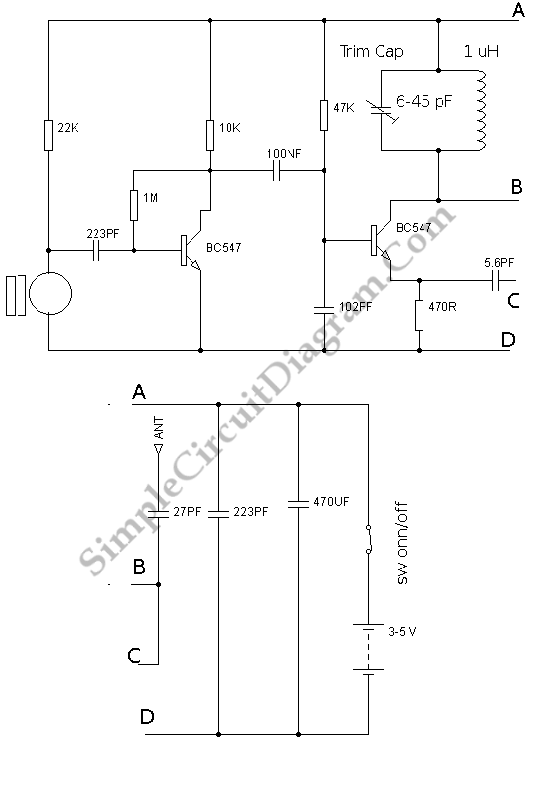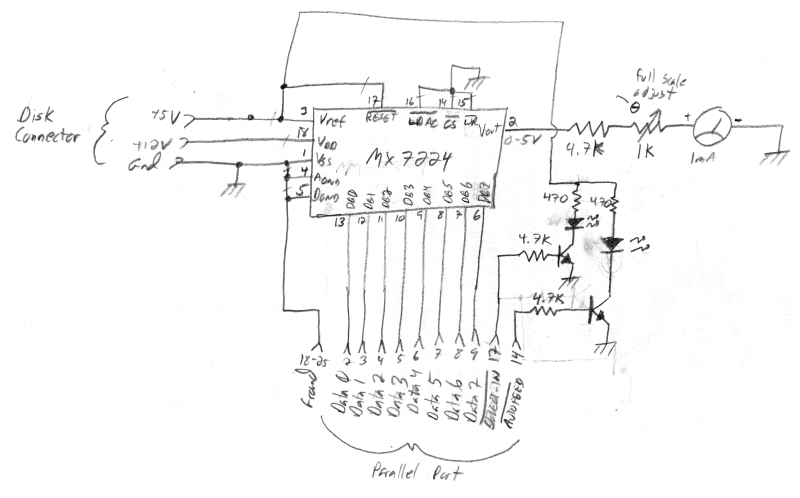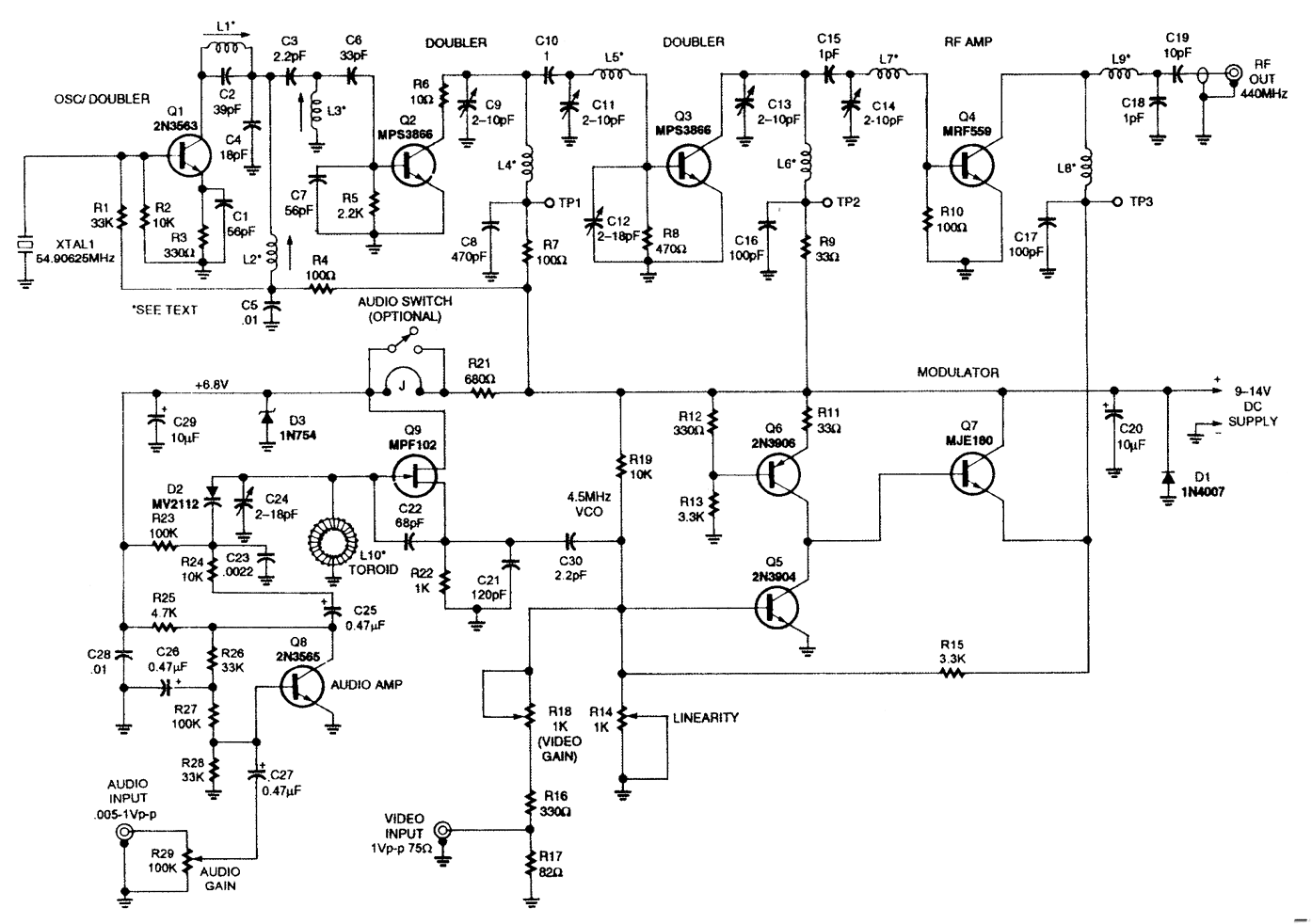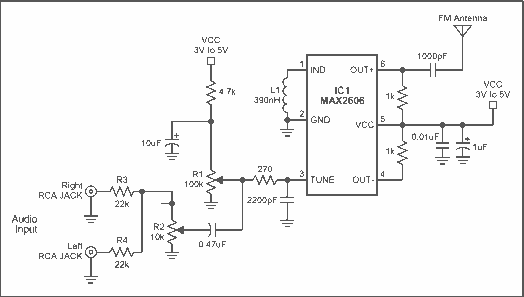
Two Transistors FM Transmitter

This circuit is a radio frequency (RF) oscillator that operates around 100 MHz. The audio is picked up and amplified by the electret.
The RF oscillator circuit described operates at a frequency of approximately 100 MHz, making it suitable for various applications, including RF transmission and signal modulation. The core component of this circuit is the oscillator, which generates a continuous wave signal at the specified frequency.
To achieve the desired oscillation, the circuit typically employs a combination of inductors and capacitors to form a resonant LC circuit. This resonant circuit is crucial for determining the oscillation frequency, as it allows for selective frequency tuning. Additional components, such as transistors or operational amplifiers, may be used to amplify the signal and enhance the oscillator's stability.
The electret microphone serves as the input device for audio signals. It converts sound waves into electrical signals, which are then amplified to ensure sufficient strength for further processing. The amplified audio signal can be mixed with the RF signal generated by the oscillator, enabling the modulation of the RF carrier wave with the audio information. This modulation process is essential for transmitting audio signals over radio frequencies.
Overall, this RF oscillator circuit, combined with an electret microphone, forms a fundamental building block for audio transmission systems, allowing for wireless communication of sound signals. Proper design considerations, including component selection and circuit layout, are essential to optimize performance and minimize interference in practical applications.Basically, this circuit is a radio frequency (RF) oscillator that operates around 100 MHz. The audio which is picked up and amplified by the electret.. 🔗 External reference
The RF oscillator circuit described operates at a frequency of approximately 100 MHz, making it suitable for various applications, including RF transmission and signal modulation. The core component of this circuit is the oscillator, which generates a continuous wave signal at the specified frequency.
To achieve the desired oscillation, the circuit typically employs a combination of inductors and capacitors to form a resonant LC circuit. This resonant circuit is crucial for determining the oscillation frequency, as it allows for selective frequency tuning. Additional components, such as transistors or operational amplifiers, may be used to amplify the signal and enhance the oscillator's stability.
The electret microphone serves as the input device for audio signals. It converts sound waves into electrical signals, which are then amplified to ensure sufficient strength for further processing. The amplified audio signal can be mixed with the RF signal generated by the oscillator, enabling the modulation of the RF carrier wave with the audio information. This modulation process is essential for transmitting audio signals over radio frequencies.
Overall, this RF oscillator circuit, combined with an electret microphone, forms a fundamental building block for audio transmission systems, allowing for wireless communication of sound signals. Proper design considerations, including component selection and circuit layout, are essential to optimize performance and minimize interference in practical applications.Basically, this circuit is a radio frequency (RF) oscillator that operates around 100 MHz. The audio which is picked up and amplified by the electret.. 🔗 External reference





